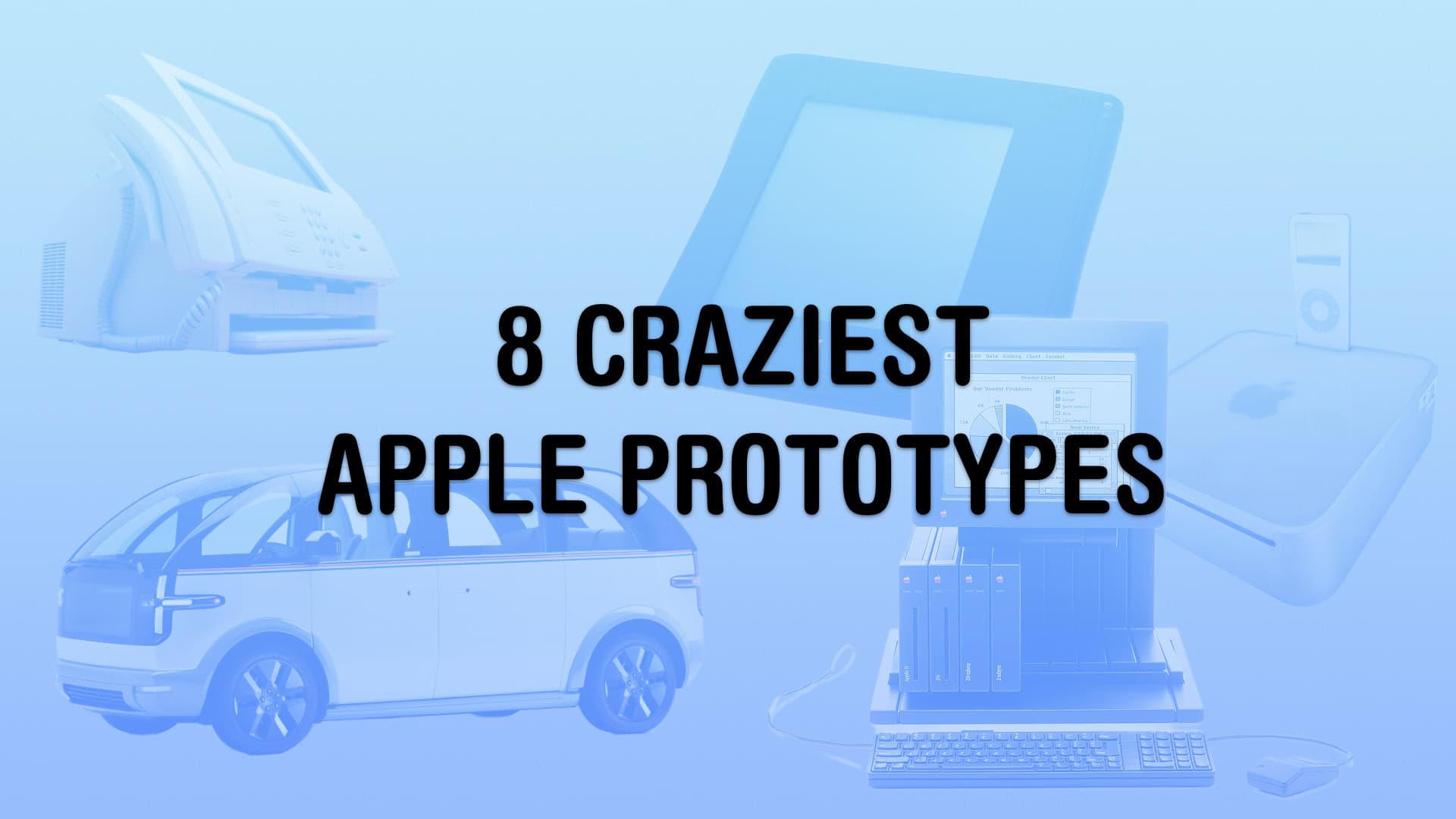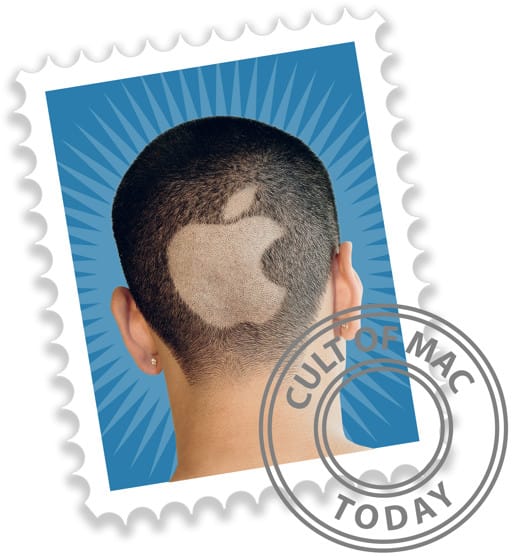Apple only shows off its finished products, which makes the company’s secret prototypes and early concepts all the more fascinating. Details of these first-draft designs usually don’t come out until years after Apple dreams them up and discards them. Even if you’re well-versed in Apple history, these alternate-history unreleased Apple products will intrigue and confuse.
The wild and crazy ideas go back more than 40 years. If anything, it proves that Apple continuously skates toward the next hit. The quest for innovation continues, no matter whether the company is in dire straits or cruising on success. Keep reading or watch our video to see the wildest Apple products that might have been.
The wildest and weirdest unreleased prototypes from Apple history
Apple Jonathan prototypes
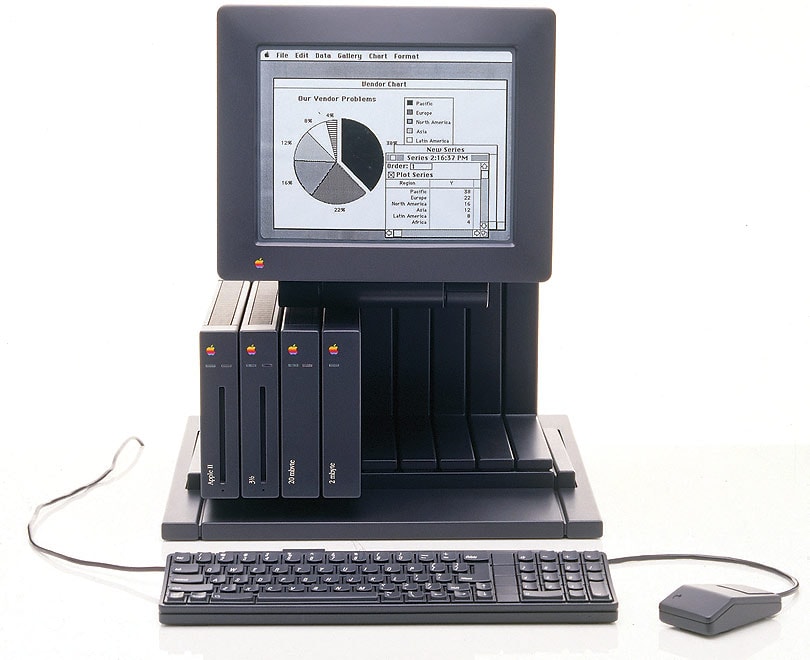
Photo: Rick English/frogdesign
By late 1984, after the first couple models of the Macintosh shipped, Apple executives started to plan for the next big thing. Wait, what? That’s crazy, right? The Macintosh was undeniably approachable and easy to use. However, it wasn’t modular like the Apple II. Plus, higher-end machines from Sun, Amiga and DEC easily outperformed the Mac. Apple’s idea of making expandability easy took the form of a bookshelf-like machine code-named the “Apple Jonathan.” The Apple Jonathan would be expandable and upgraded by adding new modules, which were all about the size of a hardback book.
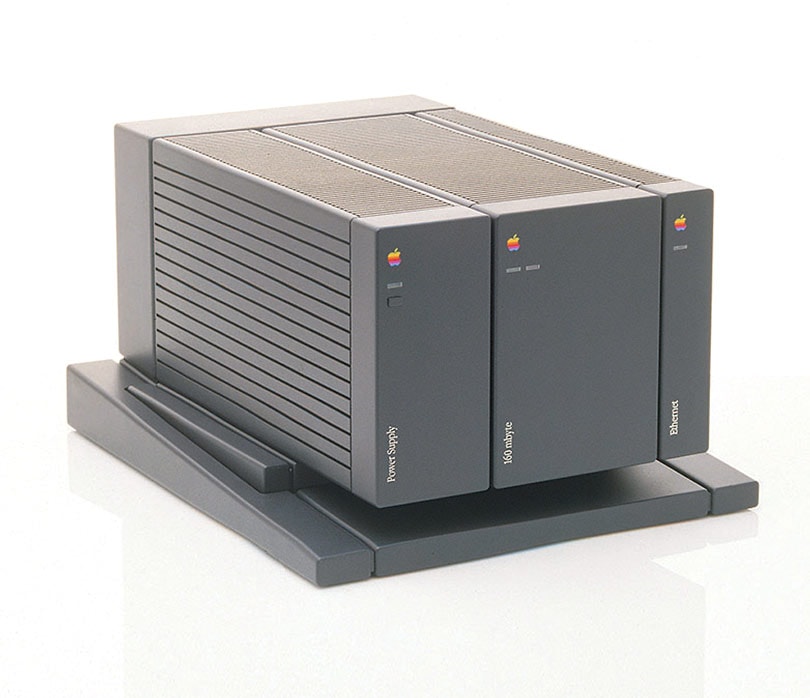
Photo: Rick English/frogdesign
The modules would be plug-and-play, and you could simply add an extra hard drive, more powerful graphics, peripherals and third-party accessories. Such a machine would have been highly ambitious from an engineering standpoint. Of course, because this was to be a professional computer, it would be black, as these prototypes show.
Ultimately, Apple never released a product like that — nor has any other computer manufacturer. In reality, the Macintosh won out. The line was expanded to the low-end Macintosh Plus, the midrange Macintosh SE and the gigantic, top-of-the-line Macintosh II.
Apple Paladin prototype
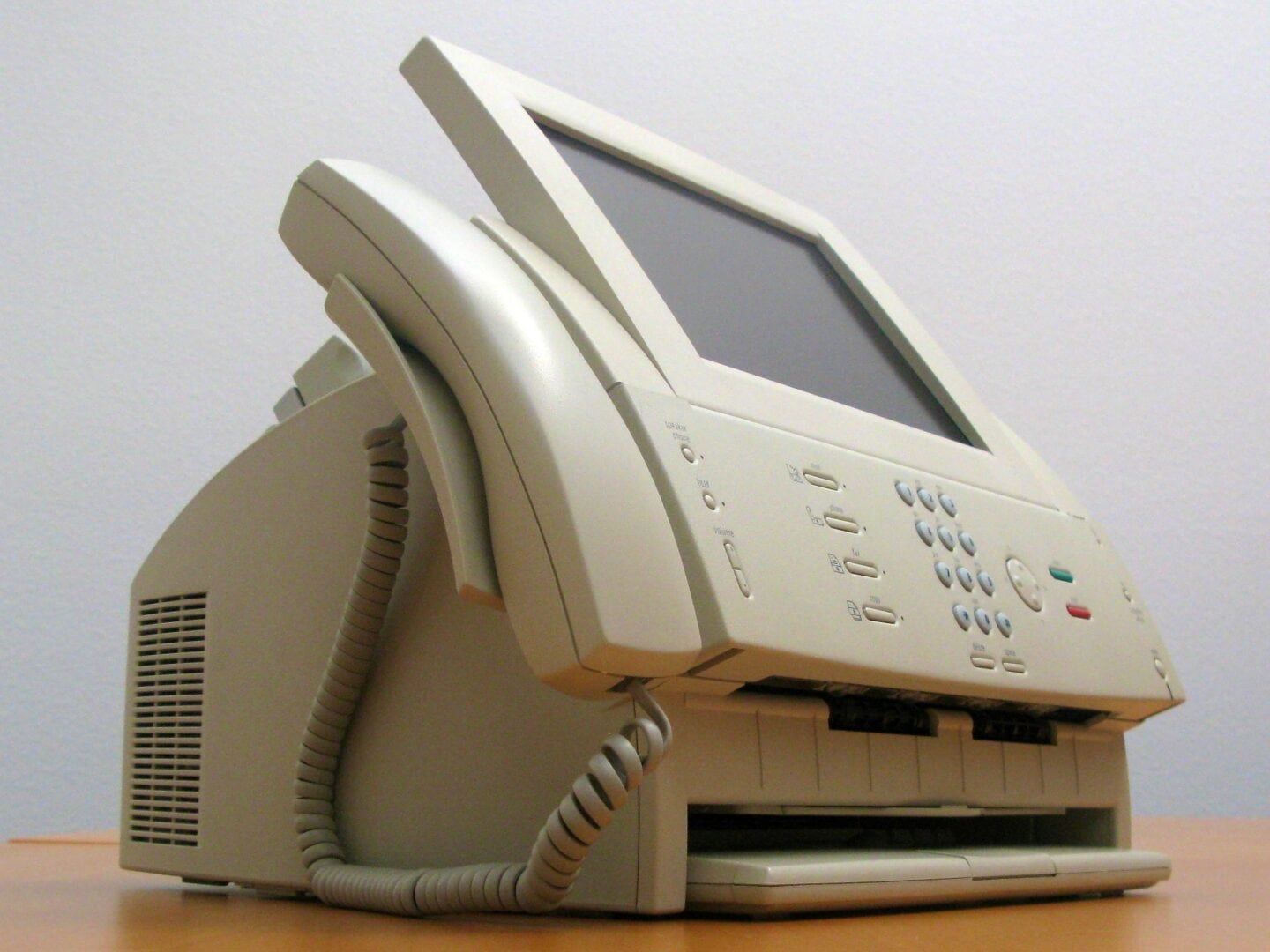
Photo: Jim Abeles/Flickr
Another experiment with the Macintosh form factor arrived in the Apple Paladin, which took the idea of an all-in-one computer to the next level in the 1990s. This unreleased machine combined a computer with a desk phone, scanner and fax machine. You would be able to switch between the different functions by pressing the many buttons on the front. The Paladin would have been targeted at small businesses that wanted all those separate features on a tight budget or people who would be intimidated by the complexity of buying a PC tower, monitor, fax machine and scanner all separately.
The mind races imagining just how fast Apple co-founder Steve Jobs would have destroyed an Apple Paladin with a baseball bat if he ever saw one.
Giant Newton tablet
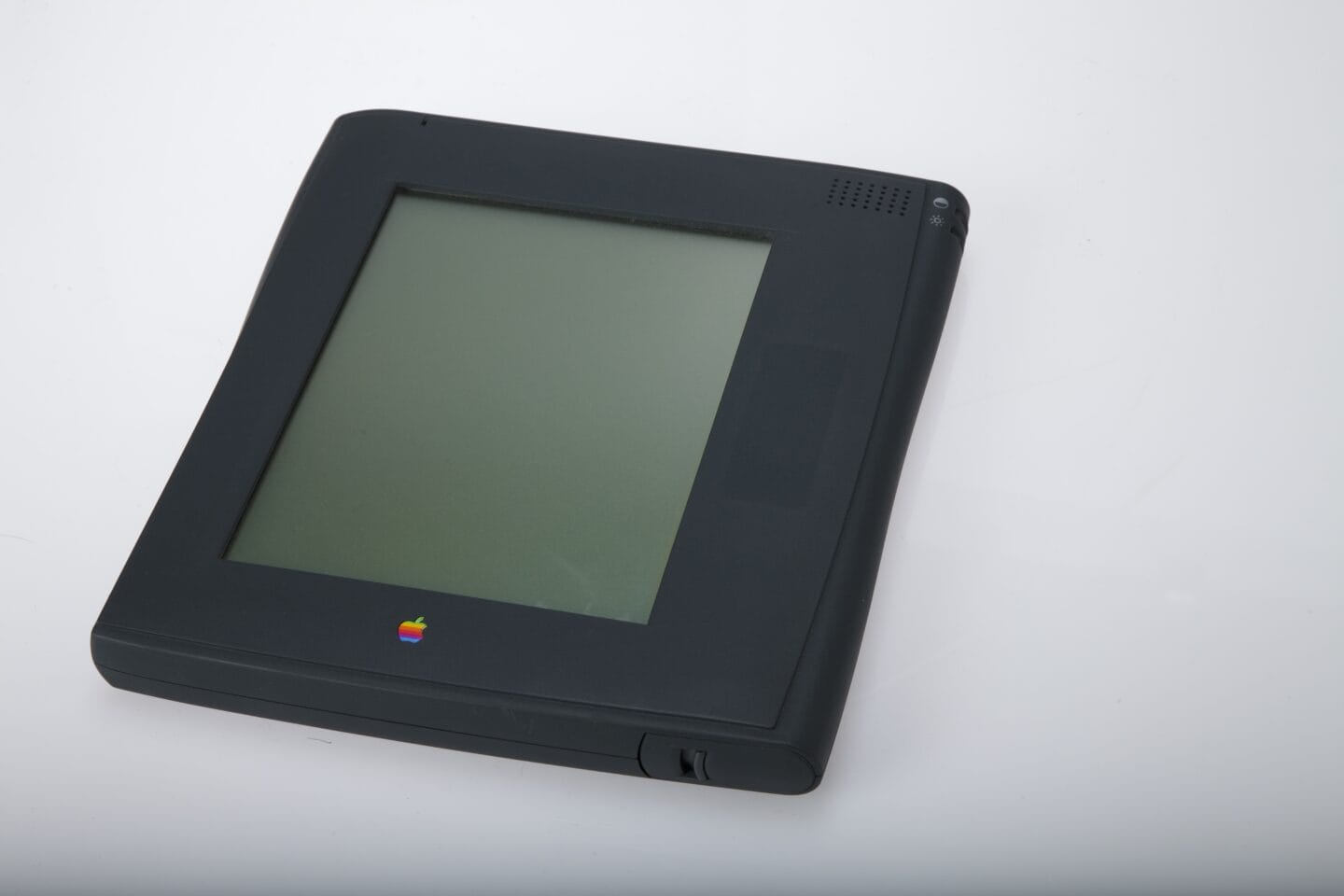
Photo: Jim Abeles/Flickr
The smartphone before the smartphone was the PDA, or personal digital assistant. The PalmPilot was the most famous example. Apple’s offering was called the Newton MessagePad, and it was the passion project of then-CEO John Sculley. The Apple Newton products that shipped in the ’90s were all roughly the size of a modern iPad mini — slightly too big to actually fit in a pocket.
However, the original Apple Newton prototypes included a much bigger version that never saw the light of day. The screen was about the size of a sheet of paper, with even bigger black bezels expanding it into a sprawling tablet. This isn’t a PDA you whip out to jot down some notes in a meeting. This is a tablet you would have set up on a desk.
Early versions of the Apple Newton famously struggled to make good on promises of seamless handwriting recognition. Everyone mocked the device for this problem. Later versions, like my MessagePad 2000, finally fulfilled the original dream. No one knew it at the time, but the “killer app” that would have made the Newton great hadn’t been invented yet: Wi-Fi.
Perhaps if Apple gave the Newton more time, a larger, more powerful, more capable version — like the unreleased tablet in this prototype — could have become a feasible product.
Early G4-era iPad prototype
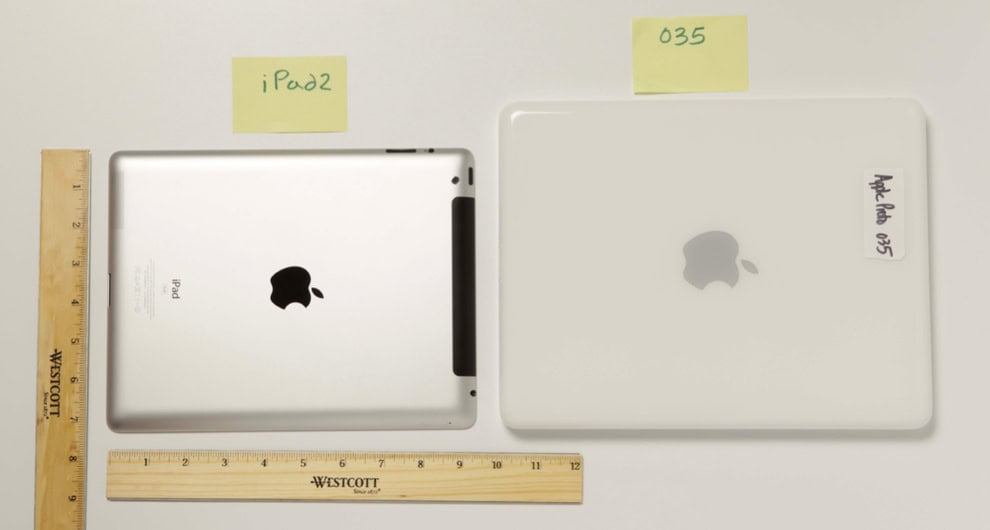
Photo: Buzzfeed
Even after discontinuing the Newton, Apple kept developing tablets internally, as shown by this prototype from 2002. With its white polycarbonate shell, it looks very much like a member of the Apple family of the era. You can imagine it fitting in perfectly next to the classic white plastic iPod, the iMac G5 and the iBook. It’s about as thick as a laptop of the early 2000s, but without a giant array of ports and slots, the sleek white case looks pretty modern.
The iPad started as an experiment into the new technology of capacitive touchscreens. Older resistive touch screens, used in the Apple Newton, Nintendo DS and some higher-end cars, required a stylus for smaller screens and couldn’t support multi-finger gestures.
Screens that you could tap with your finger instead of poke with a stylus were an exciting development. According to former Apple executive Scott Forstall, the very first touchscreen tech demo involved a ceiling-mounted projector pointed at a table-size capacitive surface. The Rube Goldberg contraption ran an early version of Mac OS X, and was used to try out interactions like swiping to scroll and dragging windows to move them around.
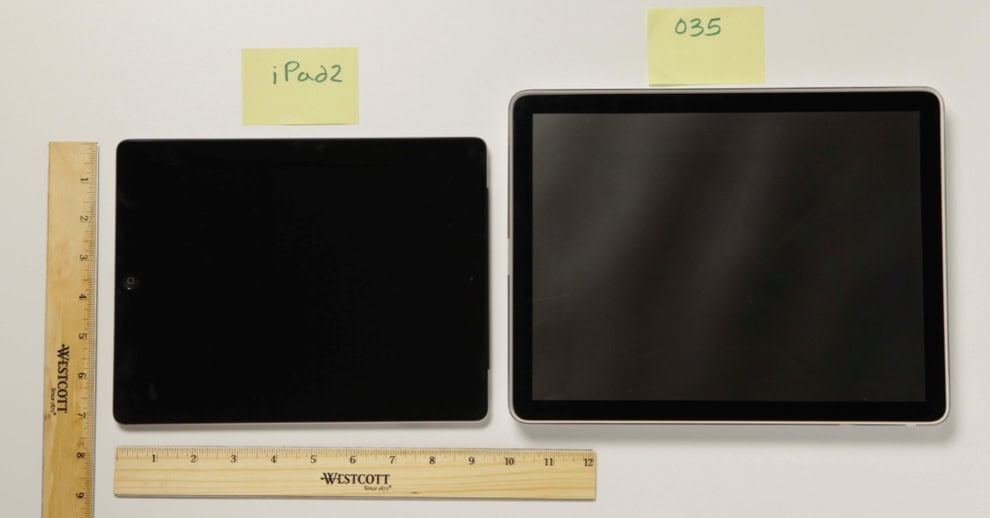
Photo: Buzzfeed
It’s unknown how developed Apple’s sleek white tablet prototype was. No pictures show it powered on, so who knows what software it ran on — or if it was functional at all. It wasn’t until years later that the tablet experiment was shrunk down into the first iPhone, which shipped in 2007. And it took another three years after that for the iPad as we know it to ship.
The Mac mini iPod dock
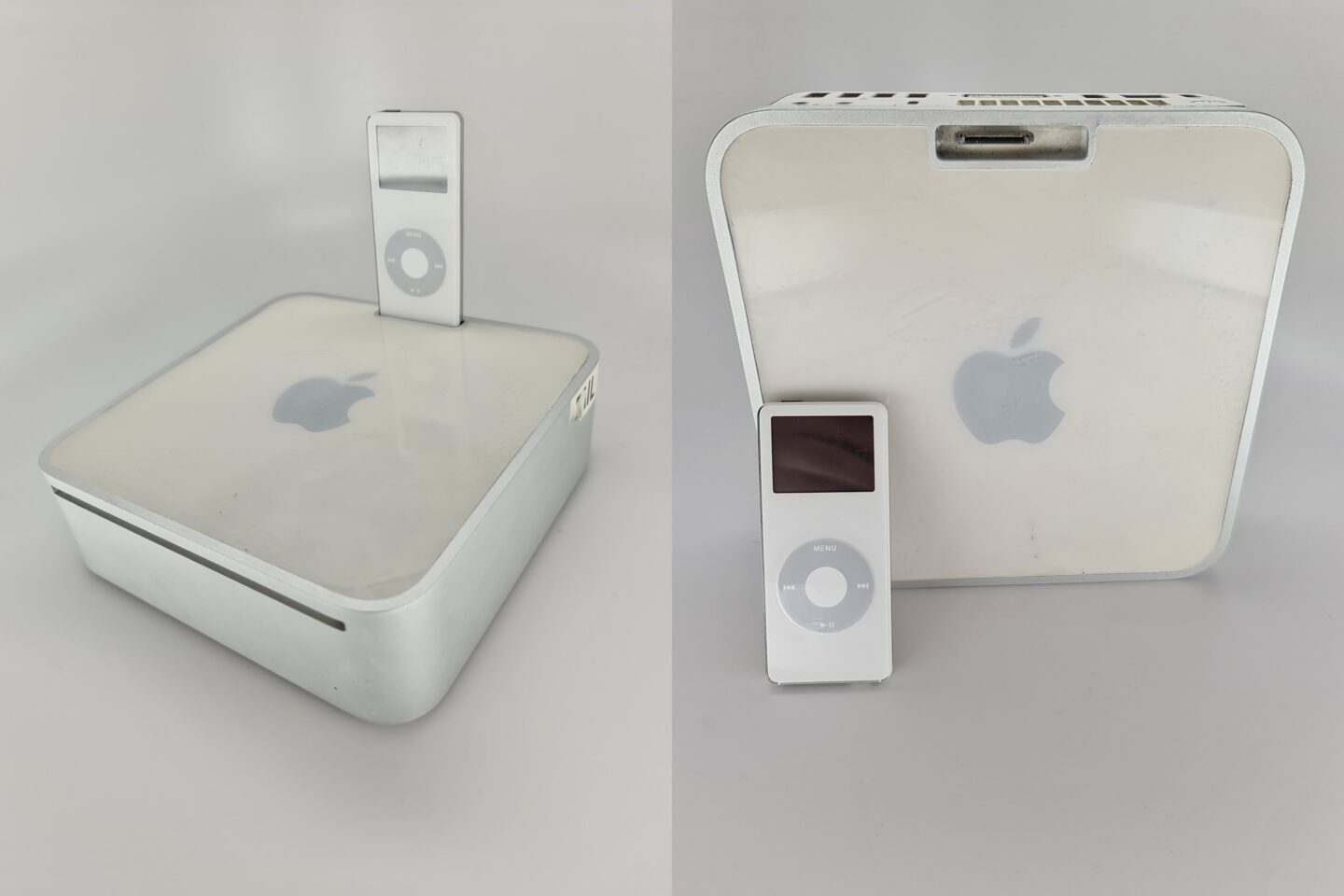
Photo: @DongleBookPro/X
In the 2000s, when Apple was most aggressively trying to take back PC market share, Apple executives tried to piggyback off the success of the iPod as much as possible. Based on what they called the “iPod halo effect,” the thinking was that if people come into an Apple Store to buy an iPod, staffers could try to sell them a Mac at the same time.
The face of this campaign was the Mac mini. For just $499, you could literally unplug your PC and plug in a Mac instead, using the same display, keyboard and mouse. And what better way to show that this is the “iPod computer” than to build an iPod nano dock into the Mac mini? You can just imagine how these would be lined up and displayed in the Apple Store right between the other iPods and Macs.
While the iPod nano and Mac mini look really cool plugged into each other, it begs the question of what happens when Apple changes the design of the iPod nano, or if you buy a full-size iPod instead. Honestly, what probably killed the idea is that when the iPod wasn’t plugged in, there was a hole in the top of the computer. Steve Jobs would have found that upsetting.
The iPod phone
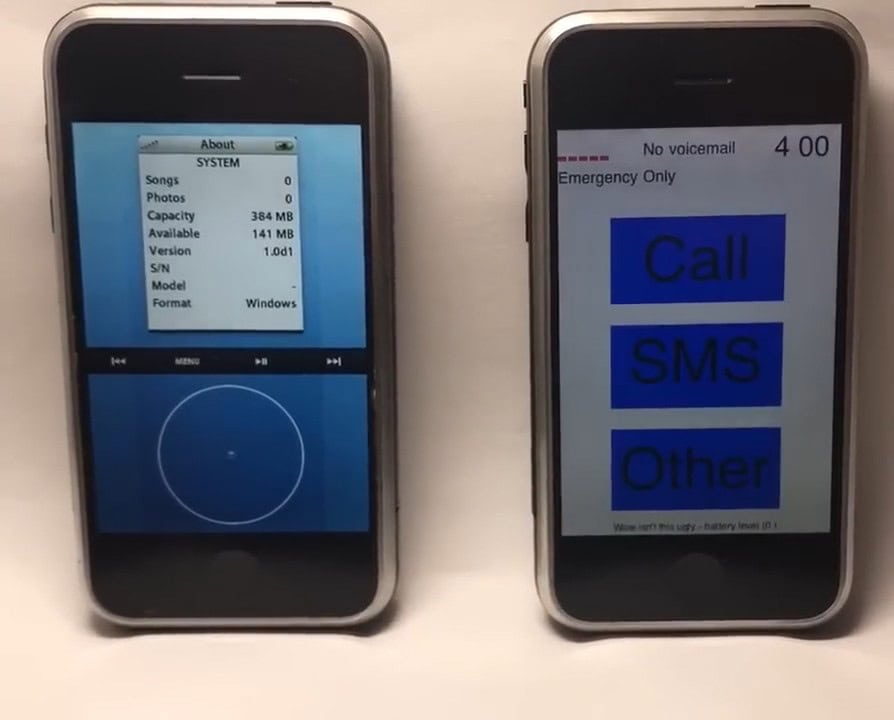
Photo: Sonny Dickson
Once Steve Jobs and his lieutenants decided to make a phone, there were two different approaches: Shrink the tablet prototype, or take an iPod and add a phone to it. Apple wasn’t sure at first which would be a better path to pursue, so the company set up two teams to try out each approach.
The iPod team enjoyed a head start, since the music player was already a fully developed (and popular) product line. Adding a cellular radio and a new part of the user interface for dialing numbers was all that needed to be done. But the limitations immediately started to show. The iPod’s click wheel interface is great for scrolling through a library of songs, but according to former Apple VP Tony Fadell, it was terrible at dialing phone numbers.
The iPod was a consumption device: You organized your music on your Mac, and you browsed and listened to it on your iPod. The iPod didn’t have a keyboard for typing phone numbers — much less texting or adding new contacts.
This crazy prototype idea even got some screen time at an Apple event
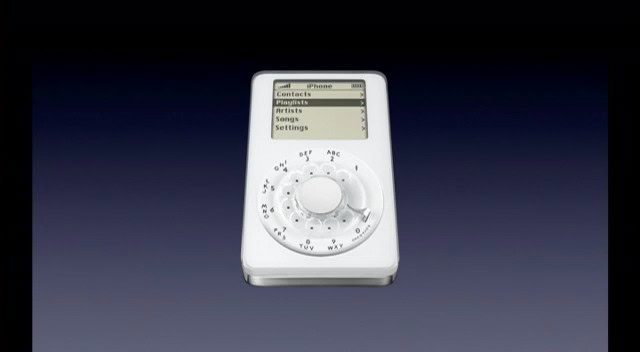
Photo: Apple
From a modern perspective, an iPod phone sounds absolutely ridiculous. But from 2004’s perspective, the iPhone we ended up with was incredibly ambitious and wasn’t guaranteed to work. Mac OS X was still running slow on full-size desktop computers — running the same foundation on a pocket-size, battery-powered device would be a major effort. Mac OS X was in the middle of a processor transition from PowerPC to Intel — the ARM chip inside the iPhone would be a third different platform.
The silly idea of an iPod phone was immortalized in the introduction of the real iPhone, as a joke by Steve Jobs, before the real thing was finally shown off.
The many early, weird iPhone prototypes
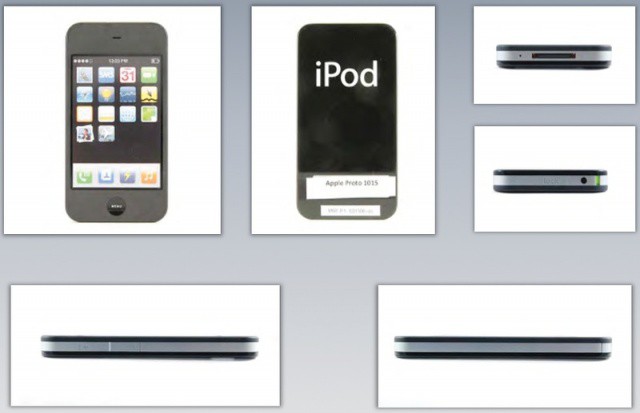
Photo: Apple
Once Apple settled on a software stack, the matter of the phone’s physical form became something of a design playground. After all, it was the first device of its kind. Some of the Apple phone prototypes look familiar: a slick rounded black bar of soap that became the iPhone 3G and iPhone 3GS; an ice cream sandwich-style design that became the iPhone 4 and iPhone 4s; and designs with a tall and skinny display like the iPhone 5 and iPhone 5s.
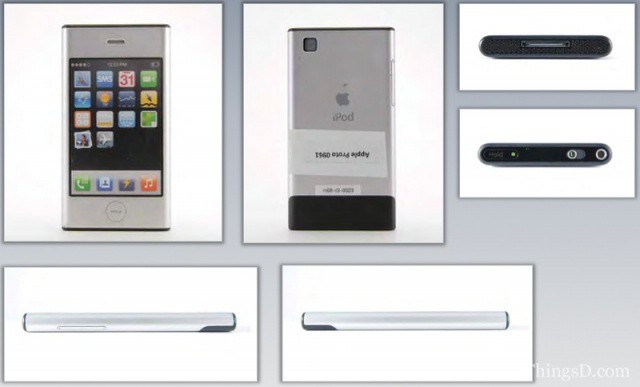
Photo: Apple
Many of the designs were inspired by the iPod of the time, with a rounded shape, a silver face and even a sliding power button instead of a clicking button. Some of the early Apple phone prototypes even have the word “MENU” printed on the Home button instead of the iconic rounded rectangle.
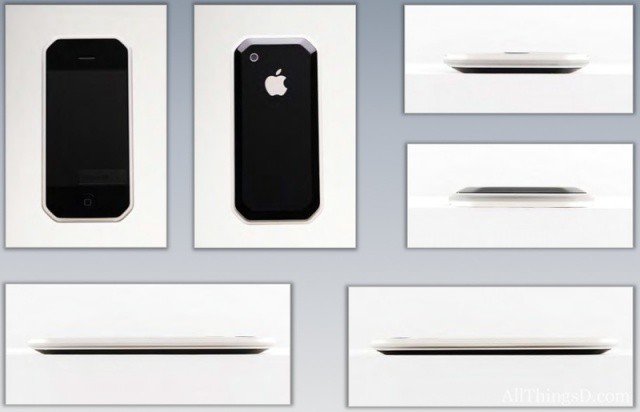
Photo: Apple
Apple produced some truly bizarre one-off designs, too. One prototype was octagonal. Another added a giant, rounded hump on the back. While the original iPhone may not have been the prettiest, these prototypes are proof that there are a thousand “nos” for every “yes” when it comes to Apple design.
The Apple car
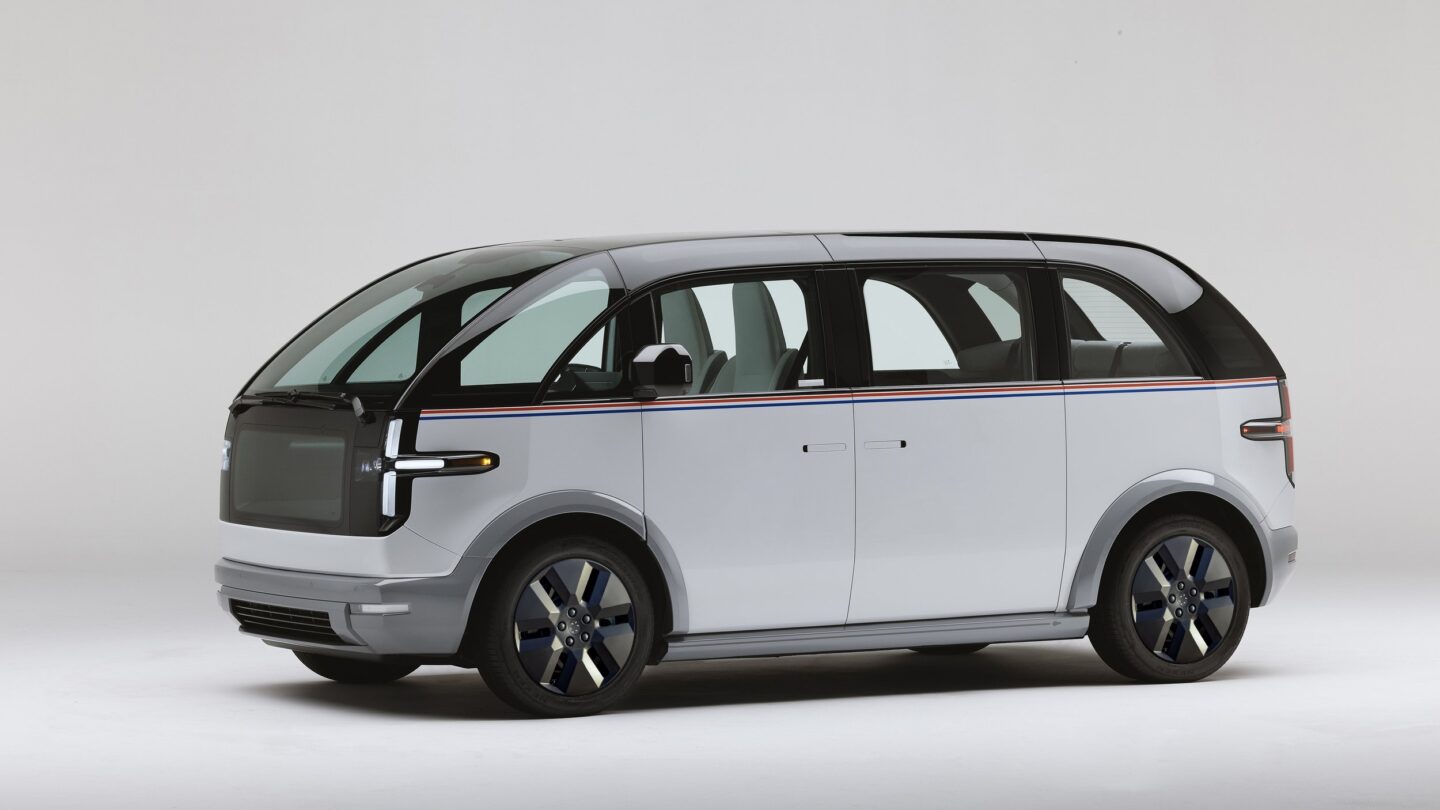
Photo: Canoo
One of Apple’s worst-kept secrets ever was the automotive initiative known as Project Titan. The company dumped billions of dollars into building a car before pulling the plug this year. But what did the unreleased Apple product that aimed to transform transportation look like? How did it work? What weird quirks and features did it have? That all remained a mystery until Apple shut down the project. Without anything to lose, considering all that special talent was being laid off, the world quickly found out.
Multiple prototypes of Apple’s unreleased car
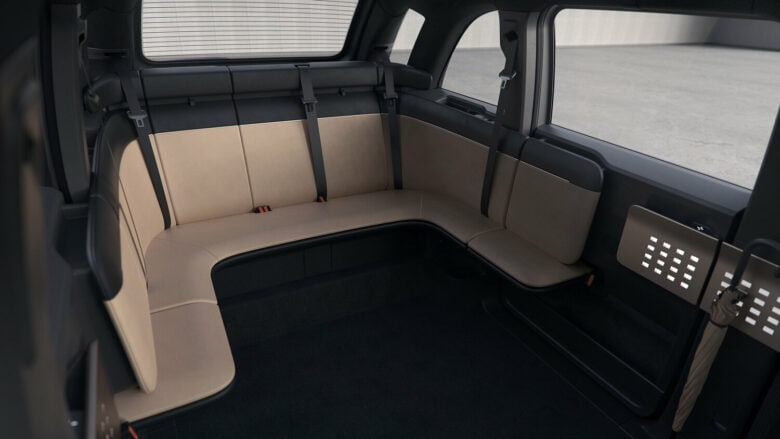
Photo: Canoo
The first design, known affectionately as the “bread loaf,” would have looked something like the Canoo EV. As reported by Mark Gurman at Bloomberg, Apple envisioned this unreleased car as some kind of minivan crossed with a VW bus. The prototypes sported sliding doors and a glass canopy.
“The cabin would have club seating like a private plane, and passengers would be able to turn some of the seats into recliners and footrests,” Gurman reported. Going all-in on full autonomous driving, this model didn’t come with traditional automobile components like a dashboard, steering wheel or pedals.
A second design under Kevin Lynch, Apple’s vice president of technology who took over the project, was “pod-shaped, with curved glass sides that doubled as gull-wing doors.” This radical Apple car prototype looked even weirder — and almost identical from the front and the back. It featured “ramps that would automatically fold out” for moving cargo. Apple designers seemed unbelievably confident that the company would nail full self-driving capabilities. In fact, this model didn’t even include windows on the front or the back.
To this day, no automaker can deliver a fully autonomous car. So perhaps it’s no surprise that Cupertino couldn’t get it to work, either. No wonder Apple opted out of the game. However, loads of other car manufacturers continue working on the problem — with varying degrees of success. Maybe Mercedes will deliver on the first-class lounge experience that Cupertino could only dream of.
When it comes to unreleased Apple products, personally, I still wish I had an Apple Jonathan.
